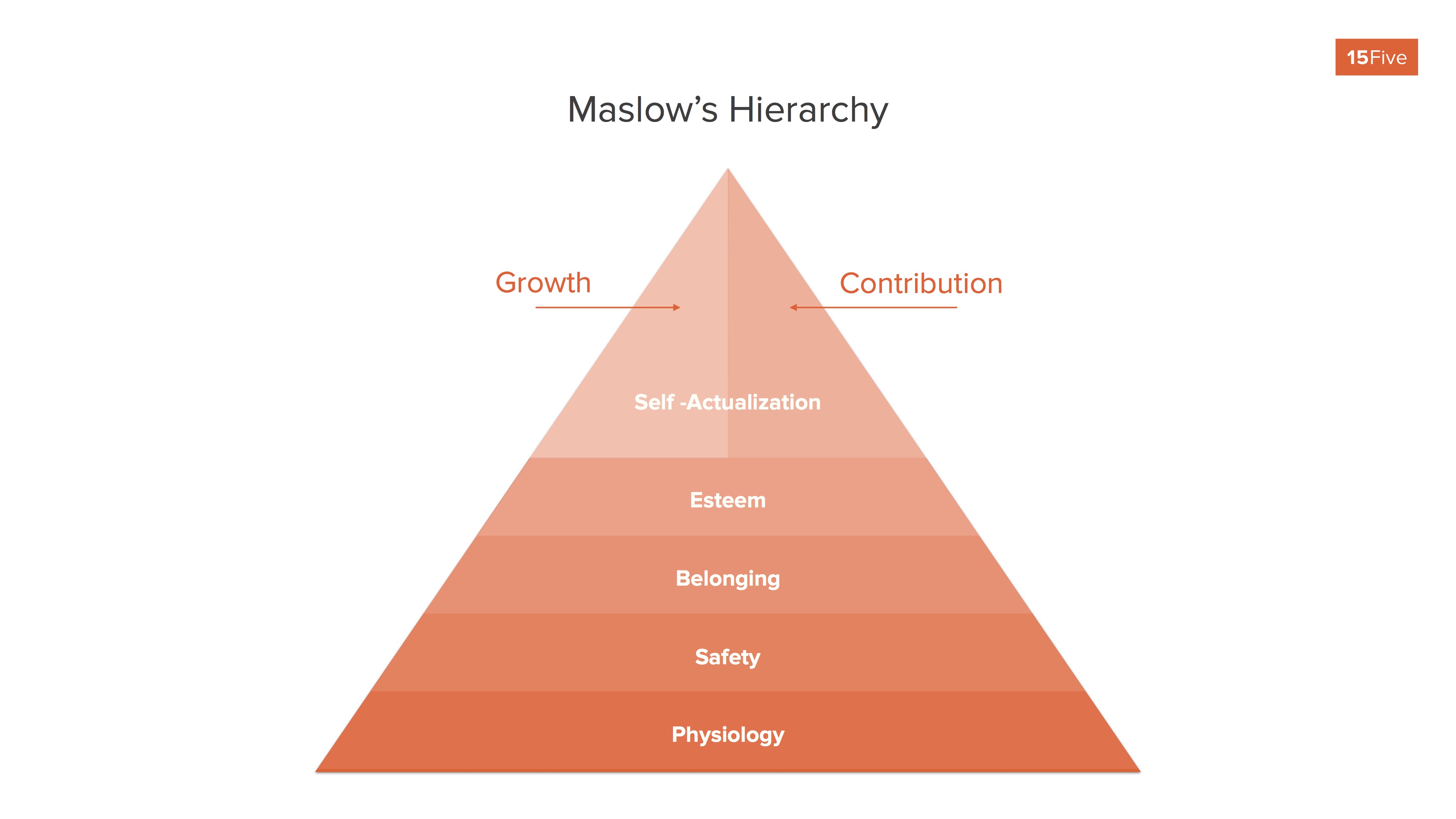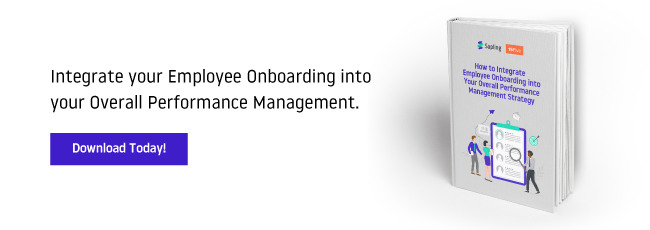eBook Preview: Employee Onboarding Meets Your Overall Management Strategy
When does the “performance management” of a new hire begin?
Most leaders will tell you it takes place during those first days or weeks of a new hire’s arrival, when manager and employee sit down and establish goals. Progressive managers may add that the performance management process is an ongoing activity, with frequent check-ins and periodic overall reviews as the employee moves forward in their career trajectory.
But what if your performance management strategy considered what happens even before an employee’s first day of work?
Including onboarding as part of performance management enhances the employee experience, which in turn improves retention and helps to create a more productive and connected workforce.
We’ve joined forces with the People Operations Strategists at Sapling to bring you the Guide to Integrating Employee Onboarding With Your Overall Performance Management Strategy. Below, you can read the first two chapters of this phenomenal resource.
Employee onboarding is more than orientation
While companies typically provide an introduction to the company culture, workplace rules and processes, and to each specific job through a new hire orientation, onboarding is something far more involved.
A typical first-day orientation goes something like this:
• Employee complies with the email that instructed them to show up at 8:30 am.
• Upon arrival, they have to wait at security because they don’t yet have a badge.
• Once they get clearance, someone shows them to their department, but the manager is in a meeting.
• The computer and other equipment are on order or with IT, so the new hire is told to have a seat at an empty desk where they can fill out paperwork and read a lengthy tome entitled The Manual until their manager is free.
• They watch one or several videos to help orient them.
• New employee glances around the workspace, feeling forgotten, unimportant, and wondering if they’ve made the right career decision.
Or perhaps a company is more prepared and has the new hire’s equipment ready and waiting. Maybe the manager is there to greet them and sits down to discuss the responsibilities and goals of the job and how evaluation takes place. While the employee appreciates getting this concrete information, they also don’t have context for it. They feel inundated with information but don’t feel comfortable enough to say anything.
These situations often happen on an employee’s first day, but neither of these are examples of proper onboarding. Onboarding is a process that helps new employees shift from being outsiders to insiders of an organization.
Intentional employee onboarding is important for building a healthy, thriving company. This part of the employee lifecycle is particularly necessary for companies that are rapidly expanding, since those organizations risk losing their cultures in the process. The sooner new employees can become part of the fabric of a company, the less likely they are to leave.
A proactive management strategy
Employee onboarding is more than a “feel good” process. Its roots are in the social science that looks at the very human need to connect. In Maslow’s Hierarchy of Needs, once physiological needs (having food, water, and shelter) and safety needs were met, the next major need is to belong. In the work world, this need to belong translates to a need to connect with others and to feel seen and valued.

In today’s tight labor market, where employers struggle to fill jobs and employees know they can easily find a replacement position elsewhere, effective onboarding creates better employee relationships with the company. It leads to lower turnover, higher performance and productivity, higher job satisfaction, and lower stress.
Research shows that organizations that engage in proactive onboarding are more effective than those who don’t. Despite the multiple benefits of effective onboarding, only 20% of companies do it, which means those organizations that do it well have a distinct advantage.
The cost of poor employee onboarding
In contrast, consider what happens when an onboarding process is not done well. The two most critical times for a new hire are 1) after they accept the job but haven’t yet started work and 2) the first three to six months of employment. Half of all hourly workers leave their jobs in the first four months and half of senior outside hires fail within 18 months. With this revolving door of employment, companies can spend the majority of their time recruiting and training, and never reap the benefits of the employee succeeding in the job.

In addition to the time and money lost in repeatedly hiring for the same job, employees who do stay, despite a poor onboarding process, may never reach their potential. A new hire’s trajectory of success is set as early as the first two weeks. That means if the onboarding process is not implemented well from the start, your employee’s motivation and performance may be limited for the remainder of their career with your company.
Keys to a Successful Onboarding:
• The goal of onboarding is to get your new hire socialized to the team, manager, and role. Do they feel emotionally connected to the mission of the company?
• Foresight and planning go a long way. Don’t ignore the employee development phase. Help them understand what success looks like and what’s expected of them.
• Role clarity is the key to success. Only 50% of employees clearly know what is expected of them at work. As role clarity increases retention and productivity increases.
• Onboarding is complete when your new team member feels like an insider, ready to help onboard new hires with comfort and ease.
By creating a memorable onboarding experience and incorporating it as part of your overall performance management strategy, you can help employees ramp up more quickly, boost their productivity and have them feel connected to your company far more deeply than you may have thought possible.

Shane Metcalf is a seasoned executive coach and speaker who is obsessed with building healthy organizations, and creating the opportunity for people to have meaningful work and meaningful relationships. Driven by his deep belief in the potential of our species, Shane co-founded 15Five, industry-leading performance management software that is unlocking the potential of the global workforce. As Chief Culture Officer, Shane understands what fundamentally motivates people, how to architect high performance, and which principles and rituals create “self-organizing cultures”. Shane has been featured in XConomy, LingoLive, and the Association for Talent Development. Follow him on Twitter and LinkedIn.





